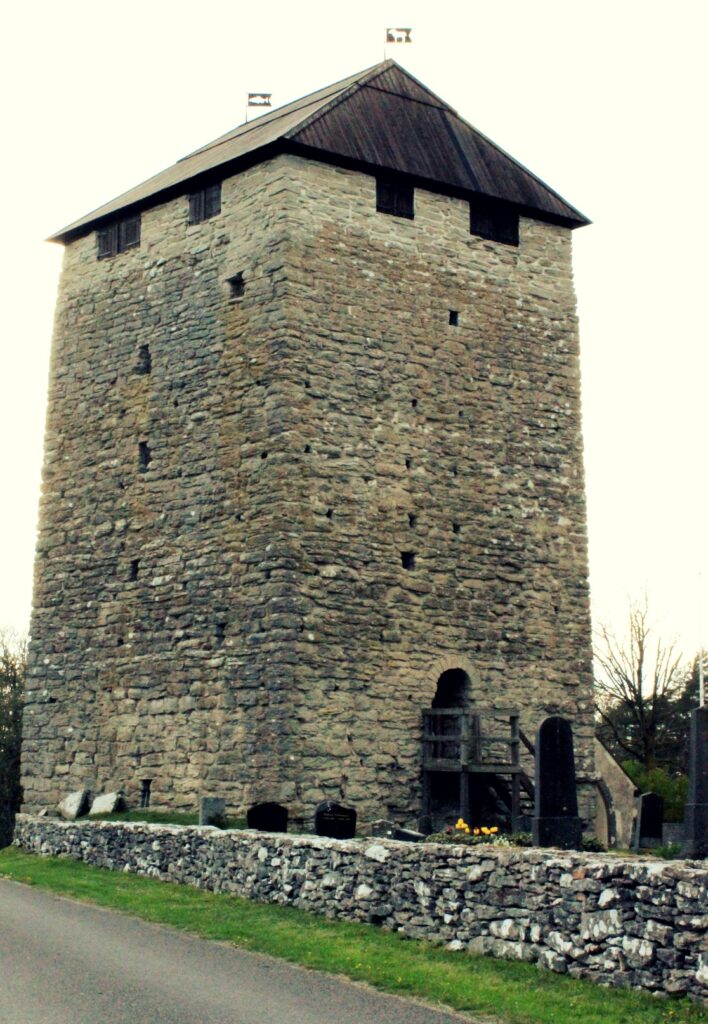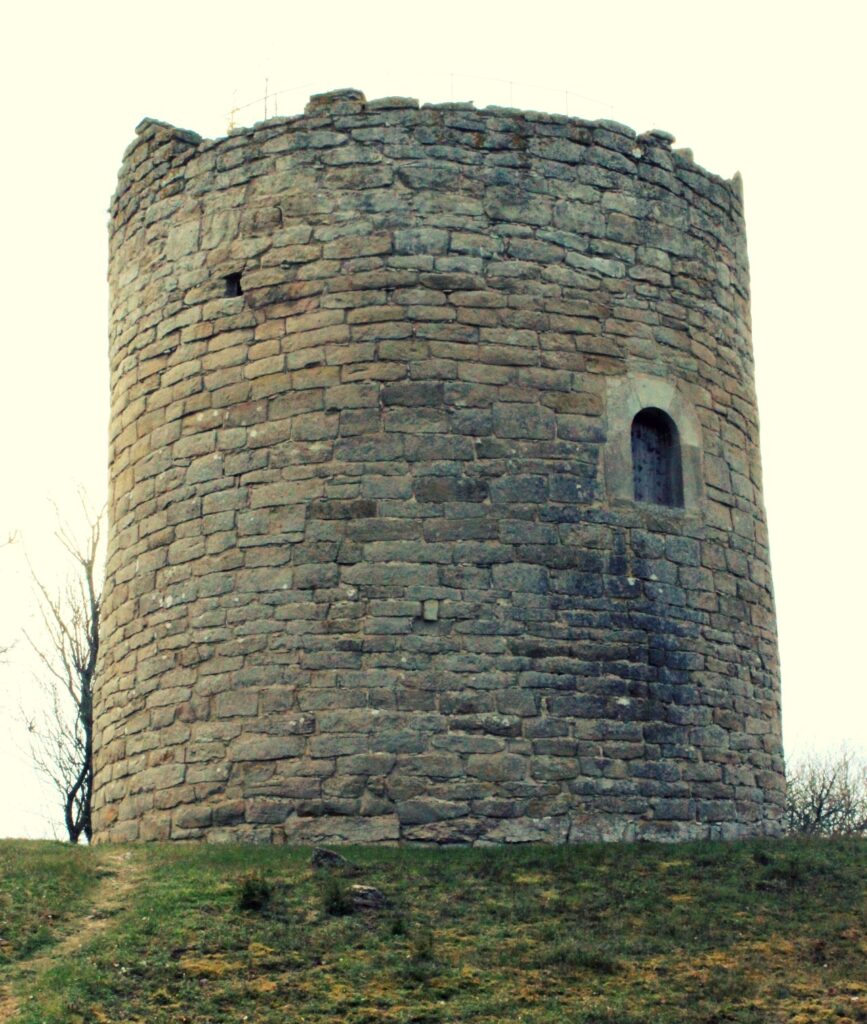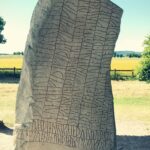Analyzing of kastal towers at the island of Gotland
Anyone who have ever been to Gotland would agree upon the fact that history is one of the strongest characteristics of this Baltic island. Your first and last encounter is the majestic medieval town Visby with its distinctive 13th century ring wall, whether you go by boat or airplane. If you travelled other parts of the Gotlandic countryside you would stumble into ancient remains as far back as the bronze age and all the way into the middle ages. Some remains from the stone age is still visible in the Gotlandic soil as well, and if you visit the stone age sites, you will most likely see material remains such as knocking stones sneaking in the ground. The special condition of the Gotlandic ancient remains is something that has for a long period of time excited scholars, not only from Sweden but all the Nordic countries. This is not only because the preservations are good but also because Gotland have many features and cultural expressions which is only situated to Gotland. One of the islands most famous remains is the picture stones which have been vital for the understanding of the iron age cultural expressions. Another important part of Gotlandic archaeology would be the iron age stone houses. These kind of stone houses from the iron age have been found at the Swedish island Öland and also in Western Norway, but the number of Gotlandic iron age stone houses are astonishing in comparison. Many of the Gotlandic remains have been discussed by scholars for many years but there are still many questions concerning this subject that is in need of answers. In this paper, one specific feature from medieval period will be discussed. The defense tower, or kastal, is not something that is unique to Gotland, although the majority of them in Sweden are to be found on Gotland. These defense tower do not have any clear definition in English and will therefore be mentioned as kastal from now on in this article.
Oh kastal, what are thou?
The appearance of defense towers is not something that is unique with Gotland in any way, quite the opposite. In times of trouble and war, throughout history, defensive buildings have been constructed. Whether it was a hill fort, fortification, or defense tower is not important, but rather the feeling of safety that it provided. The kastals uniqueness is that they were built next to, or in near geographic relation to churches. This phenomenon is, as mentioned before, not unique for Gotland. It can be found on mainland Sweden, Denmark, Åland and Norway. Before we go into details with the building, we must clarify the definition of a kastal and why the definition itself is problematic. This is relevant because of how many kastal there is and the difference they have between similar buildings.
According to traditional archaeological theory, a kastal has to be found in close relation to a church building. However, in the past few year’s scholars have been discussing different theories regarding the Gotlandic kastals. A distinction has been made in two groups consisting “gårdskastal” (farm kastal), and “kyrkokastal” (church kastal). Although some scholars suggest that all kastals are deriving from farms, and that the now standing parish churches was actually built as farm churches. However, this cannot be stated for sure, and how and if this theory can be adapted to other Nordic regions remains unclear as of today. Of all the farm kastals only two is known but a few other ones are interpreted as possible farm kastals. The majority of the farm kastals is poorly preserved and it cannot be stated for sure whether some of them are even kastals or some other type of building. However, there is one verified kastal located in relation the farm Fardrume in the parish of Rute in the northern part of Gotland. What could be argued is that this tower, also known as Mynttornet (the coin tower), have several different features compared to the typical kastal towers. With this being said, I will classify kastals according to the traditional definition; a tower who stands nearby a church. This is because the discussion regarding the definition is both confusing and, in all honesty, unclear.
In any shape or form?


As of today, Gotland is the Swedish region with most preserved kastals. Traditionally, Gotland is said to contain ten kastals: Fröjel, Gammelgarn, Gothem, Hamra, Kräklingbo, Lärbro, Sundre,Västergarn, Kruttornet (Visby), and Öja. Gotland is also one of few, if not the only, region with two different kind of kastals, which makes it possible to put them it into two defined groups: square shaped and round shaped buildings. Traditionally, the kastal of Hamra have been classified as round shaped, but during excavations held between 2017-2018, it turned out to be a square shaped tower. The former interpretation was made during the 19th century by antiquarians and was based on the fact that the corners were visible round above ground. The excavation of Hamra is one of the most recent excavations of kastals and the excavation shows a conscious absence of traditional interpretation. This is because the traditional interpretation was made by antiquarians such as Hilfeling who was a cultural historian active during the 18th century. Scholars have also divided the group of round kastals concentrated in the south Gotland and the group of square kastals that are primarily located in the north. Based on the recent excavation of the Hamra kastal, this interpretation of construction differences between south and north Gotland could possibly need revaluation. New questions must be made of why the form varied and whether it is based on different cultural diffusion or varying cultural expressions in different geographical locations. The border between the south and north of Gotland is confusing. The reason for this is because of the fact that a round shaped kastal can be found in Västergarn parish, twelve kilometer north of Fröjel parish where a square shaped kastal is to be found, so, the lines are a bit blurry.
Oh kastal, where are thou?
As for now, the subject of kastals is both confusing, incomplete and not even agreed upon by the researchers. The question of why the towers have different form have always been explained as being the result of different cultural diffusion or cultural influence. Although, it seems that different geographical locations have given birth to different cultural, local expressions and interpretations of the kastal building. The difference in cultural expression and local traditions can be seen in other parts of the Gotlandic archaeology and building history. By comparing two phenomena, the usage of gårdsportar (farm gates) and grindstolpar (gate posts), scholars have noticed how these are spread in the Gotlandic landscape. Gårdportar can be found in the Northern parts of Gotland, while grindstolpar are represented in the Southern parts of Gotland. This geographical division could be applied to kastals too since the two groups (square and round shaped) seem to be split in South and North, and therefore could be the result of local cultural expressions. Another distinction between the Gotlandic kastals is the building materials used: sandstone in the south and limestone in the north. Since the two types of stones have different qualities and appearances this could be seen as local cultural expressions. It could also be a question of difficulties transporting heavy materials over long distances since sandstone is much more likely to be found in the southern parts of Gotland, and limestone is more likely to be found in the northern parts of the island.
Building materials: a question of taste, or the size of your wallet?
Researching kastals have not really been prioritized by archaeologists. Because of this we can only speculate as to why these differences in construction patterns between Northern and Southern Gotland exist. Neither can a pattern be seen based on the parishes socioeconomic position. If kastals would have been built in rich parishes it could possibly be connected to trade, defense, toll, or storing of materials, but since this pattern is lost in the kastal research this cannot be stated. However, it is known that building in stone was a luxury that not everyone could afford. Medieval farmhouses built in stone was most often linked to Gotlandic trading. Not anyone could afford this kind of housing, which is why the men and women living in these could be a part of a higher social group. For an example, people living in stone houses could be important tradesmen, high judges, or men of the aristocracy. Although, the same analyses cannot be said for kastals and the general idea suggest that kastals could have been made in other materials. At the early stages of Christianity in Scandinavia, you can see how churches were built in wood for an example. Building in wood did not require any special, extraordinary expertise, which the building of stone constructions did. This means that building stone constructions were more demanding, time consuming, and of course, much more expensive. In Norway, scholars have started to suggest that Norwegians built their kastals in wood. The major comparison is the belltower in Vågå church. The towers made out of wood is very hard to interpret and discover archaeologically since the remains of these would only be four keystones. Kastals in wood were possibly built in parishes of lower socioeconomic status, while kastals in stone could have been a luxury one could afford in higher status parishes. This hypothesis could be relevant for Gotland, but without further archaeological research in this subject, it will be a discussion for future scholars. Until then, the Gotlandic kastal buildings and all unanswered questions will remain in its mysterious veil.
Photos: Olivia Gustavsson, 2019. Copyright 2020 Scandinavian Archaeology.
Text: Adam Engvall, 2020. Copyright 2020 Scandinavian Archaeology.
Further reading:
Andrén A 2010. Vem lät bygga kyrkorna på Gotland In: Saga och Sed 2009: Kungl Gustav Adolfs akademiens årsbok: annales Academiae Regiae Gustavi Adolph 31–59.
Engvall 2020 ”Beredskap eller Kapprustning – Något om de gotländska kastalerna”
Ekroll (In press) Tower Conference 6
Gislestam, T.1994. CGG Hilfelings gotländska resor. 1, 1797 och 1799. Visby Gotlands fornsal
Gislestam, T. 1995 CGG Hilfelings gotländska resor. 2, 1800 och 1801. Visby Gotlands fornsal
Hoffman, C. 2019 Arkeologisk undersökning av RAÄ Hamra 11:1 på Hamra Borg (kastalruin) på fastigheten Stora Sindarve 1:12 Region Gotland Lst dnr 431-1700-2018 Arrendus
– 2018 Arkeologisk undersökning av RAÄ Hamra 11:1 på Hamra St.Sindarve 1:12 samt Hamra s:27 Lst dnr 431-1086-2017
About the author

Adam Engvall
Institution: Uppsala university
Education: M.A. in Archaeology
Main period of interest: Vendel period til Early Middle Ages
Main research of interest: Vendel material culture and rapid changes in the Christinazation of Scandinavia


